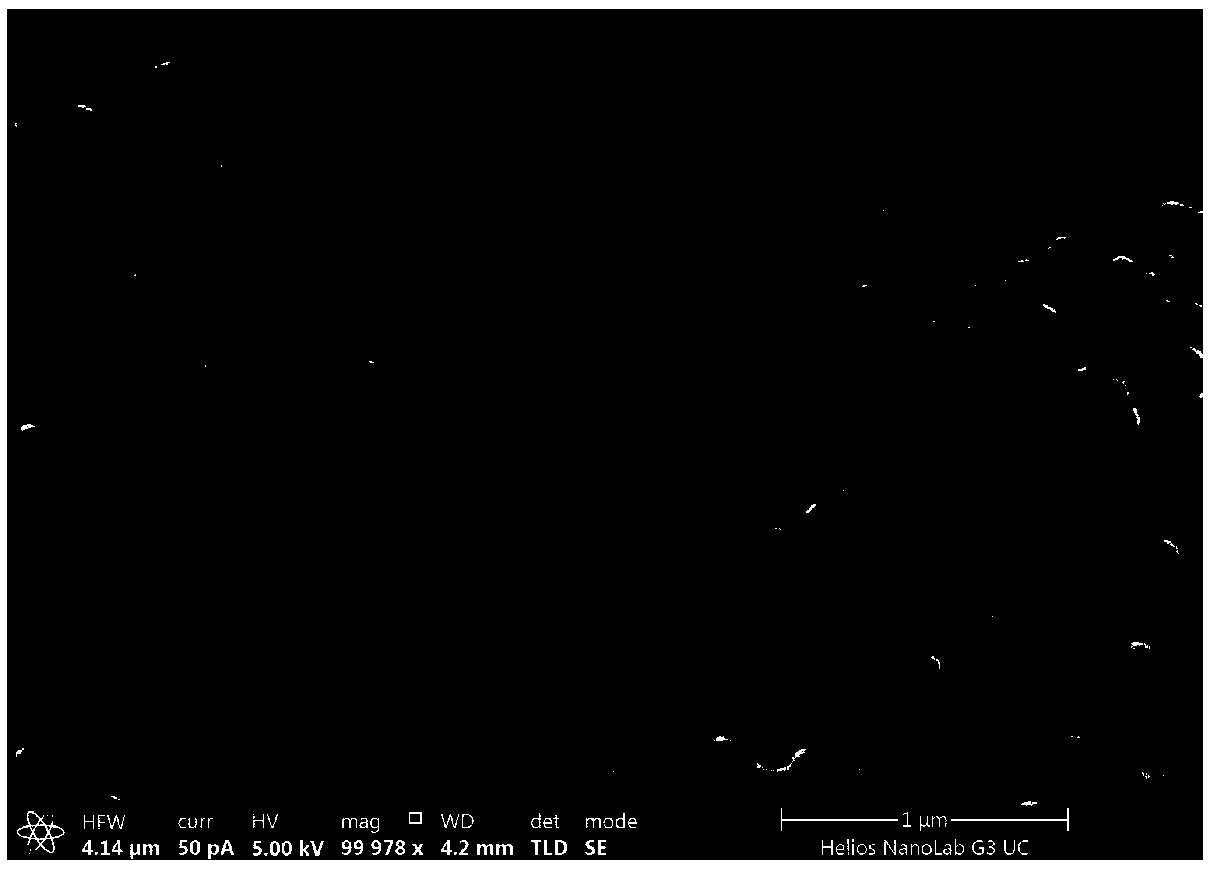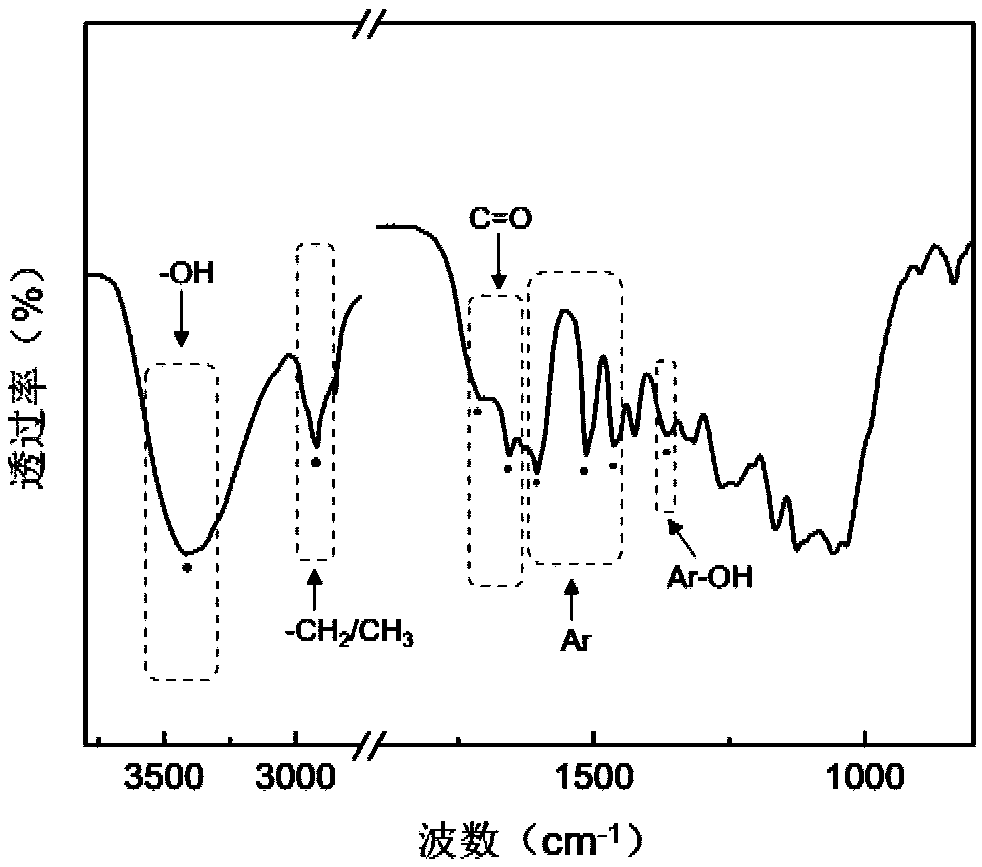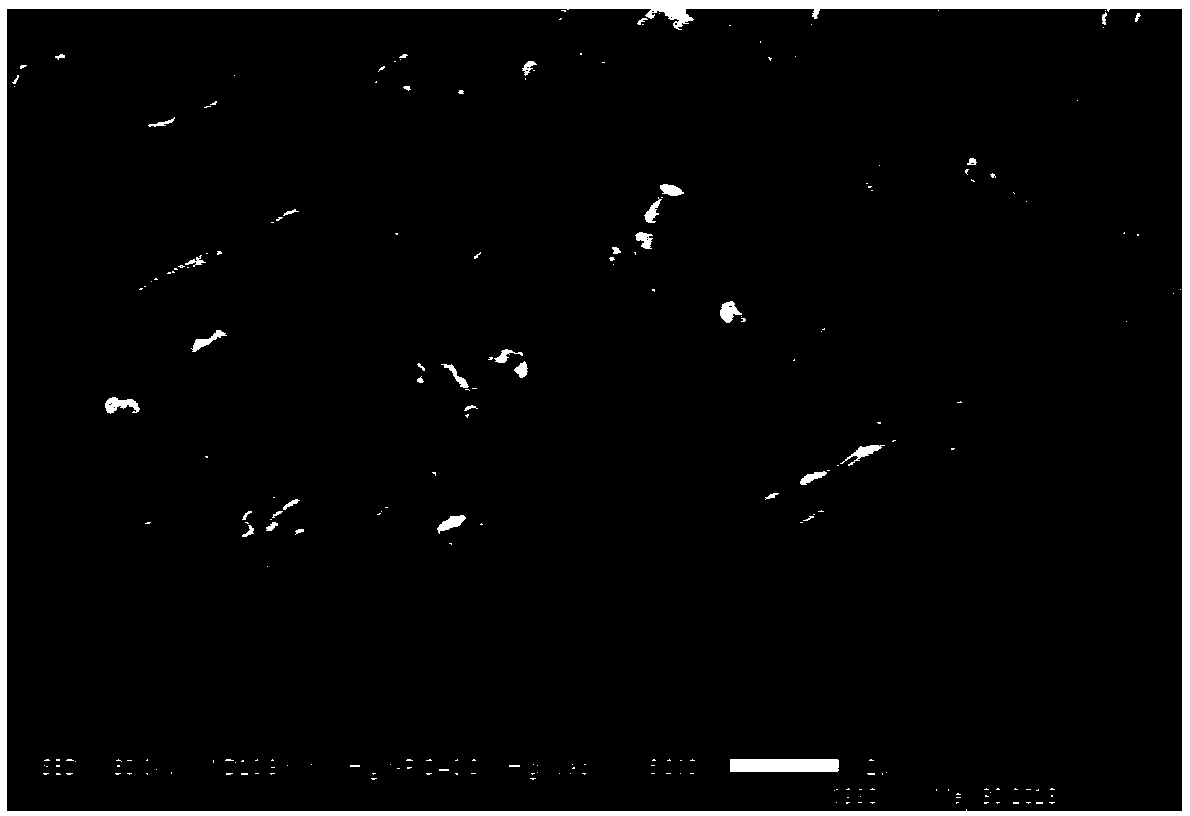Method for synchronously preparing multiple biomass materials
A technology of biomass materials and waste biomass, which is applied in the field of synchronous preparation of multiple biomass materials, can solve the problems of simultaneous preparation of multiple materials, complex processes, harsh conditions, etc., and improve the potential application range and particle size distribution Uniform and high dispersion effect
- Summary
- Abstract
- Description
- Claims
- Application Information
AI Technical Summary
Problems solved by technology
Method used
Image
Examples
Embodiment 1
[0052] (1) The corn stalks were crushed and sieved with 80 meshes, washed twice with ultrapure water, and dried at 60°C until constant weight.
[0053] (2) Put the corn stalks treated in step (1) in the reaction kettle, add dissolved H 2 SO 4 The solvent is tetrahydrofuran-water (tetrahydrofuran: water is 50:50, v / v) acid solution, then put it still in the blast drying oven, after hydrothermal treatment at 160°C for 60min, filter to obtain the treatment solution, the H 2 SO 4 The concentration in acid solution is 0.1mol / L.
[0054] (3) The obtained treatment solution was centrifuged at 12000 rpm for 10 min, and the obtained precipitate was cellulose crystals.
[0055] (4) Add 30 times the volume of ultrapure water to the supernatant, centrifuge at 12,000 rpm for 10 minutes, and the resulting precipitate is lignin nanoparticles.
[0056] (5) Put the supernatant obtained by centrifugation into a 1000 Da dialysis bag, and dialyze for 12 hours, and the solution in the obtained...
Embodiment 2
[0059] (1) The corn stalks were crushed and sieved with 80 meshes, washed twice with ultrapure water, and dried at 60°C until constant weight.
[0060] (2) Put the corn stalks treated in step (1) in the reaction kettle, add dissolved H 2 SO 4 The solvent is in the acid solution of tetrahydrofuran-water (tetrahydrofuran: water is 45:65, v / v), then put it still in the blast drying oven, after hydrothermal treatment at 180 ° C for 40 minutes, filter to obtain the treatment solution, the H 2 SO 4 The concentration in acid solution is 0.15mol / L.
[0061] (3) The obtained treatment solution was centrifuged at 12000 rpm for 10 min, and the obtained precipitate was cellulose crystals.
[0062] (4) Add 25 times the volume of ultrapure water to the supernatant, centrifuge at 12,000 rpm for 10 minutes, and the resulting precipitate is lignin nanoparticles.
[0063] (5) Put the supernatant obtained by centrifugation into a 1000 Da dialysis bag, and dialyze for 12 hours, and the soluti...
Embodiment 3
[0066] (1) The corn stalks were crushed and sieved with 80 meshes, washed twice with ultrapure water, and dried at 60°C until constant weight.
[0067] (2) Put the corn stalks treated in step (1) in the reaction kettle, add dissolved H 2 SO 4 The solvent is tetrahydrofuran-water (tetrahydrofuran: water is 60:40, v / v) acid solution, then put it still in the blast drying oven, after hydrothermal treatment at 150°C for 80min, filter to obtain the treatment solution, the H 2 SO 4 The concentration in acid solution is 0.08mol / L.
[0068] (3) The obtained treatment solution was centrifuged at 12000 rpm for 10 min, and the obtained precipitate was cellulose crystals.
[0069] (4) Add 40 times the volume of ultrapure water to the supernatant, centrifuge at 12,000 rpm for 10 minutes, and the resulting precipitate is lignin nanoparticles.
[0070] (5) Put the supernatant obtained by centrifugation into a 1000 Da dialysis bag, and dialyze for 12 hours, and the solution in the obtaine...
PUM
| Property | Measurement | Unit |
|---|---|---|
| particle size (mesh) | aaaaa | aaaaa |
| diameter | aaaaa | aaaaa |
| particle diameter | aaaaa | aaaaa |
Abstract
Description
Claims
Application Information
 Login to View More
Login to View More - R&D Engineer
- R&D Manager
- IP Professional
- Industry Leading Data Capabilities
- Powerful AI technology
- Patent DNA Extraction
Browse by: Latest US Patents, China's latest patents, Technical Efficacy Thesaurus, Application Domain, Technology Topic, Popular Technical Reports.
© 2024 PatSnap. All rights reserved.Legal|Privacy policy|Modern Slavery Act Transparency Statement|Sitemap|About US| Contact US: help@patsnap.com










